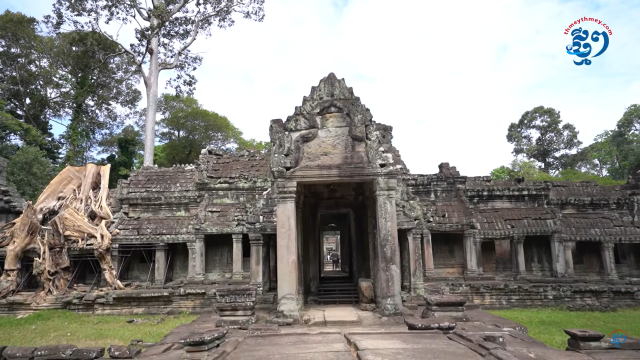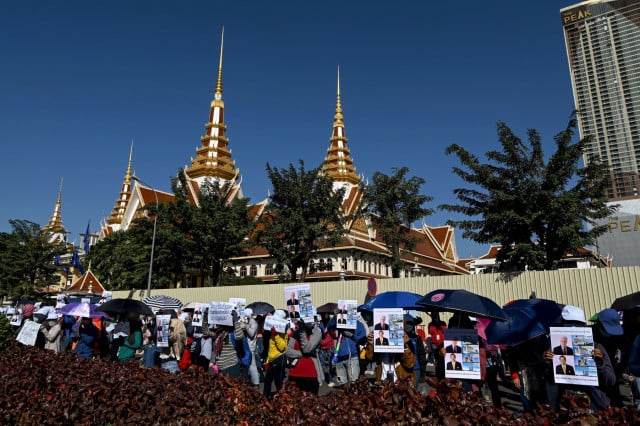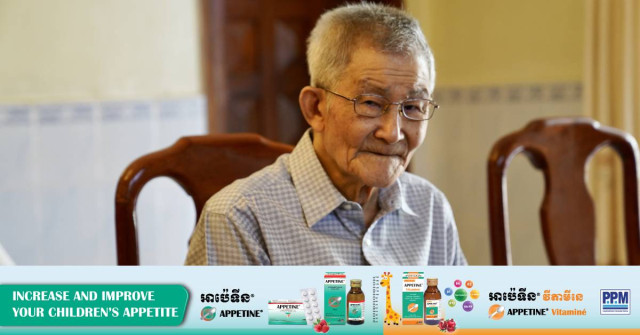To Honor His Father, the King Constructed a Grandiose Temple called Preah Khan

- By Sem Vanna
- August 26, 2023 3:00 PM
SIEM REAP — Every ancient monument tells a story. In addition to bringing the two religions, Buddhism and Hinduism, together and showcasing grand works of art, as well as honouring a father and marking a victory in war, the temple of Preah Khan has its own stories to whisper into our ears.
Situated around 12 kilometres north of Siem Reap city, Preah Khan is among the most visited temples in the 401-square-kilometre Angkor Archaeological Park—a UNESCO World Heritage site with a huge number of temples and a legacy of intangible heritage.
As Chea Sarith of the APSARA National Authority (the Cambodian government body managing Angkor) explained, the temple was originally known by another name.
_1692938601.png)
Sem Vanna: As I was informed, the current name “Preah Khan” means “holy sword.” However, this was not the original name of the temple, I believe.
Chea Sarith: “Jayasri” was the original name of the Preah Khan temple when it was constructed at the end of the 12th century. The temple, in a sense, was created to honour King Jayavarman VII following his victory over the Cham. Shaped like a rectangle, the temple is 800 metres by 700 metres. It is surrounded by four layers of walls and a moat on the outside. From a religious standpoint, Preah Khan was dedicated to Mahayana Buddhism with a statue of Bodhisattva as a representation of the king’s father. At the same time, Ta Prohm, a temple also built by Jayavarman VII, was dedicated to his mother with a statue of Prajnaparamita—a reference to a personification of wisdom known as the “Great Mother.” Preah Khan was alongside other temples such as Neak Pean and Ta Som. Stone inscriptions at Preah Khan tell the story of city planning. Jayavarman VII was also building Angkor Thom, where he constructed the Bayon temple as a place of worship.
_1692938762.png)
Sem Vanna: It is said that a monarch should build a monument for his ancestors first before he builds one for himself. Is this the case?
Chea Sarith: It was a concept set by Jayavarman II who reigned from 802 to 850. After liberating his kingdom from a greater power at the end of the 8th century, he conducted a grandiose ceremony on mount Kulen, a sacred mountain in the region, to transform himself into a god-like monarch before coming back down to Hariharalaya—today called Roluos and located about 10 kilometres south of Siem Reap city. A similar ceremony was conducted in the late 9th century by King Indravarman I when he built the Preah Ko temple for his ancestors and the Bakong for himself. Yasovarman I, who reigned in the late 9th century and the early 10th century, had the Lolei temple built for his ancestors and the Bakheng temple for himself.
_1692938999.png)
Sem Vanna: The Preah Khan temple has been greatly damaged. Was it due to the elements or man-made forces?
Chea Sarith: It is just like the cycle of life. With little care, the structure will get back. Even though there were always people coming to visit during the post-Angkorian time (after the 14th century), they could not do much besides clearing bushes, sweeping floors or other smaller renovations. Over hundreds of years, trees grew larger, uplifting the stones and enabling water to seek in and make the foundations weaker over time. Significant studies and restoration projects were conducted during the French Protectorate era when experts from the École Française d'Extrême-Orient (EFEO) made their way into Cambodia (from the 1900s on).
_1692939084.png)
Sem Vanna: Did the monarchs who came later on make changes at Preah Khan restoration over the centuries?
Chea Sarith: According to research until now, the temple was constructed in five stages. Some buildings were constructed during later monarchs. Some structures extended the original ones to meet the needs during those times.
_1692939133.png)
Sem Vanna: Why is there a stupa inside the temple’s hallway?
Chea Sarith: The place here used to house a statue of a divine figure during the temple’s earlier time. However, the stupa was later put here during the post-Angkor era as it is related to Theravada Buddhism. This room over here used to house the stone inscription explaining the city planning. Labelled K.908, this inscription is preserved at the Angkor Conservation office, which is part of the Ministry of Culture and Fine Arts.
Interviewed in Khmer for ThmeyThmey News, the story was translated by Ky Chamna for Cambodianess News.
To watch the interview in Khmer, click here.















